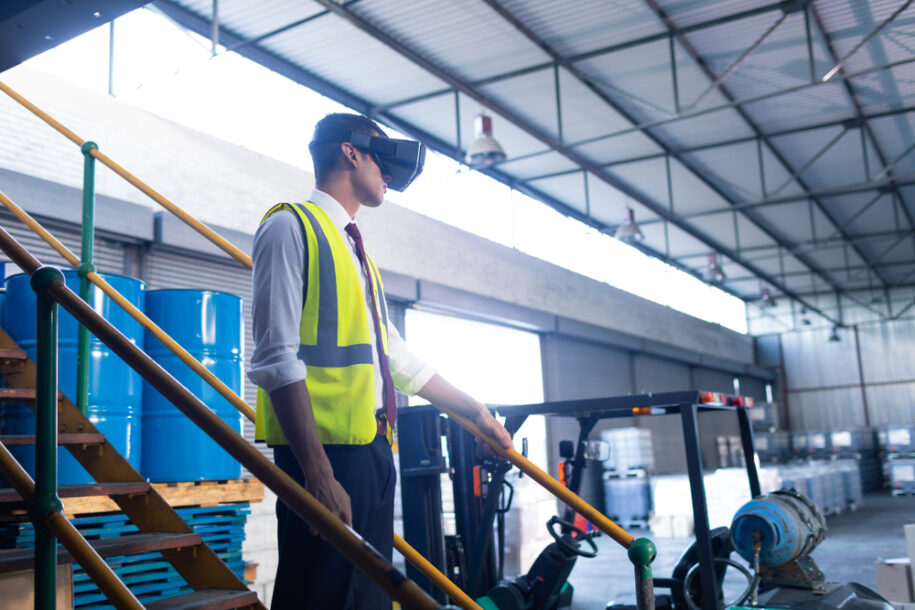The following was written by our content partner, Sisu VR
Active threats, accidents, and hazards can pose serious risks to employee safety. While incidents are almost inevitable, with the right knowledge employees can effectively mitigate these harms. In this article, we will explore the various types of workplace threats, accidents, and hazards, and discuss ways to prevent each via immersive training.
Workplace Violence
Workplace violence can involve physical assault, verbal abuse, and even the use of weaponry. Violence can be perpetrated by employees or individuals external to an organization. For example, incidents can stem from interpersonal conflicts between employees, such as a terminated employee perpetrating acts of aggression on their ex-colleagues. Incidents can range from mild altercations to severe or life-or-death situations.
Workplace violence can also include active shooter threats. To prepare for such scenarios, U.S. organizations ought to educate employees on (a variation of) the “Run, Hide, Fight” strategy as taught by the Department of Homeland Security.
According to founders John Bassi, and Michel Maddelena of JM Spartan Training LLC, “A workplace violence prevention program within an organization is important…it provides for risk mitigation through planning and preparation, which develops proficiency. Proficiency enables the organization to efficiently identify, assess, and manage safety-related matters or potential threats in a timely manner.”
Ultimately, to ensure a safe working environment, individuals ought to be equipped to respond effectively, protecting themselves and others from potential harm. In fact, it is crucial to train employees on warning signs, de-escalation or conflict resolution techniques, and self-defense strategies.
Immersive training using virtual reality (VR) is an impactful tool to educate organizations on workplace safety. By providing comprehensive safety programming, an organization can better equip employees with the necessary tools and knowledge to respond effectively in high-pressure situations. VR training offers highly interactive, simulated experiences allowing employees to practice responding to conflicts or incidents of workplace violence.
Workplace Accidents
Accidents can occur due to wet or uneven surfaces, improper footwear, congested walkways, or poor lighting. In fact, slips, trips, and falls are among the most common workplace accidents. As such, it is crucial for safety programs to educate on identifying potential hazards and how to promptly address them. By implementing specific measures, such as requiring footwear equipped with non-slip soles, an organization can significantly reduce the risk of accidents.
Another type of incident is poor ergonomics, which can lead to debilitating injuries (e.g., musculoskeletal disorders and repetitive strains). Safety training ought to instruct on ways to prevent such risks. Techniques may include adjusting workstations to ensure optimal body alignment, partaking in regular breaks, understanding proper lifting forms, and incorporating frequent stretching exercises to mitigate fatigue and strain.
Through the power of VR training, employees can learn how to respond to an emergency through realistic simulations of potential workplace hazards. Immersive training also allows employers to provide employees with hands-on experience dealing with equipment that may be difficult to handle in a physical sense.
Fire and Electricity Hazards
The last category of workplace risks comes from fire and electricity. Preparing for external hazards may include learning how to properly handle electrical equipment and outlets, and knowing what to do in the event of an electrical malfunction.
Crisis management ought to equip employees with the necessary skills to handle emergencies, and should cover essential topics, such as evacuation procedures, first aid training, fire extinguisher handling, and crisis communication protocols. Conducting regular drills and tabletop exercises can also help ensure employees are well-prepared. Ultimately, a comprehensive emergency action plan should outline procedures for evacuations, sheltering, and communication in the event of a threat.
Jennifer Lastra, CEO of 360 Immersive, states “most compliance-based safety training is outdated, boring, and leaves our most vulnerable workers ill-prepared to keep themselves safe, especially in high-hazard industries. That’s where the use of immersive training, VR sims, and gamified exercises [come into play].”
Using VR to train employees to respond to fire emergencies can be impactful. Trainees can virtually experience the breakout of a fire, and learn how to quickly identify exit routes or use fire extinguishers. VR education can also train users on how to evacuate a facility or office space, familiarizing them with the designated assembly points and ways to assist colleagues.
Sisu VR offers innovative anti-harassment training focused on interactivity and empathy, aiming to create a memorable learning experience. With the power of VR, and the PIXO platform we have made this training engaging and easily accessible for all. If you are interested in learning more about our immersive training, reach out to us.

Leave a Reply
You must be logged in to post a comment.